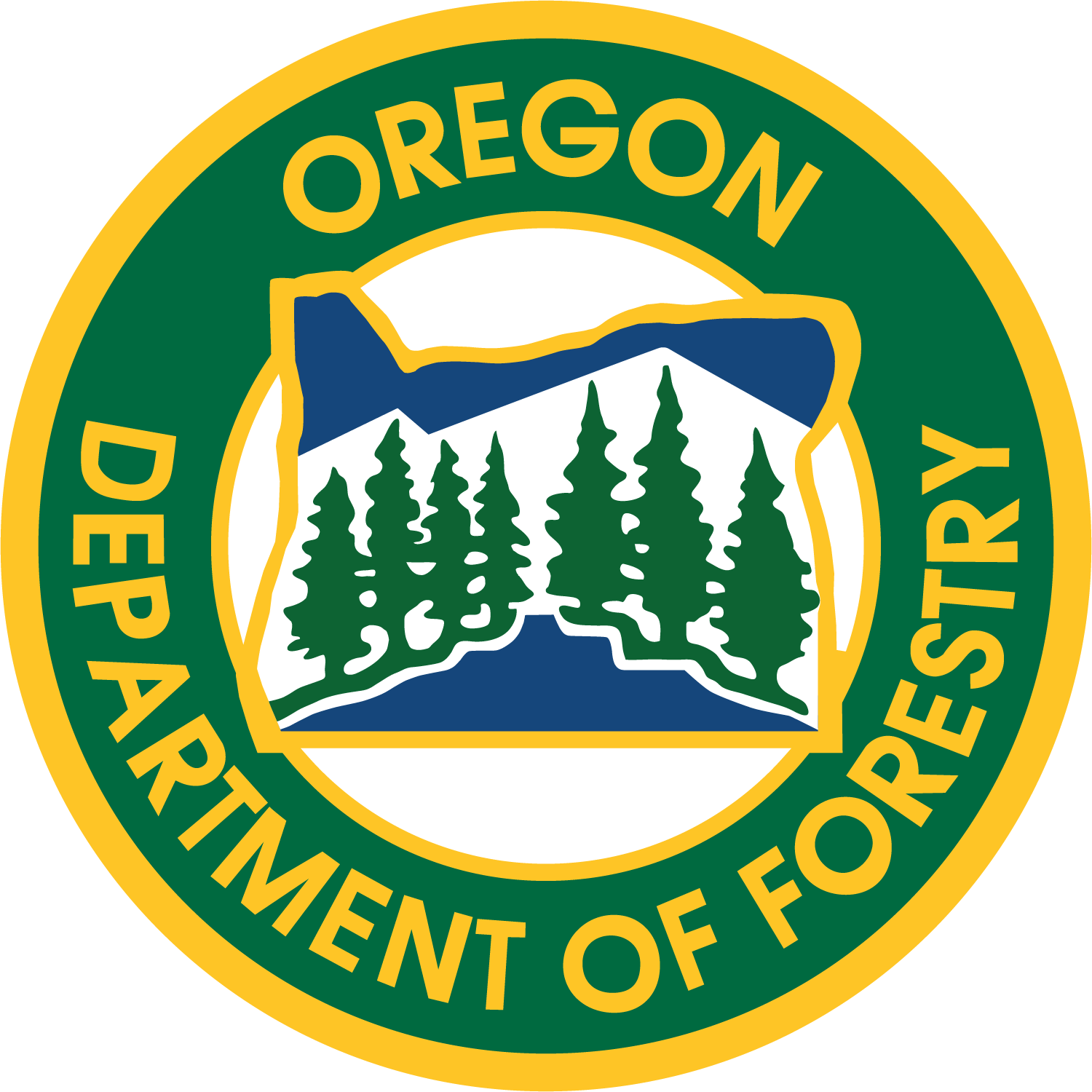Oregon Department Of Forestry Announces Recipients Of First Climate Smart Forestry Awards (Photo) -09/26/24
SALEM, Ore. – The Nature Conservancy of Oregon and the Klamath Tribes (represented by Craig Bienz and Steve Rondeau), forest landowners David and Mary Ann Bugni, and Searching for Climate-Smarter Forestry leads Dean Moburg and Peter Hayes were recognized earlier this month by the Oregon Board of Forestry with the Oregon Department of Forestry’s first Climate Smart Forestry Awards, a new honor developed by the agency following adoption of its 2021 Climate Change and Carbon Plan.
The award recognizes landowners, land managers, researchers, operators and other forestry professionals who use climate change-adapted practices or develop innovative methods for carbon capture and/or retention, or reduced carbon release. Nominees are considered for exemplary climate smart research and/or innovation.
“The goal is to recognize, encourage, and improve climate and carbon practices to protect Oregonians and our forests,” explains ODF’s Christine Buhl and Emily Martin, the award leads.
Fire resilience testing leads to new knowledge
When the Climate Change and Carbon Plan was approved three years ago, ODF State Forester Cal Mukumoto pointed out that Oregon forests were already being affected by changes in climate. “Fire seasons have become longer and more intense, with more acres burned,” he said.
It’s a trend The Nature Conservancy of Oregon hopes to affect through its research in the Sycan Marsh Preserve in South Central Oregon. Since 2006, The Nature Conservancy has worked in partnership with the Klamath Tribes, Oregon Department of Forestry, U.S. Forest Service and others to test the effectiveness of forest restoration practices. Such practices, including forest thinning and prescribed fire, are intended to improve the health of the forest ecosystem, promote biodiversity conservation, increase resilience to climate-driven changes in weather, and moderate intensity and severity of wildfires.
Both thinning and prescribed fire, performed separately or together, has been performed on more than 4,000 acres of the Sycan Marsh Preserve since 2006. After the 2021 Bootleg Fire engulfed part of the preserve, formal analysis demonstrated that the areas previously treated with controlled burning, either alone or in combination with thinning, burned with lower severity, allowing most trees to survive.
A surprise finding was that volcanic soil was converted to humus-rich mollisol soil in areas where prescribed fire and thinning had occurred. “Mollisols store more carbon,” points out Craig Bienz, Sycan Marsh Preserve Director for The Nature Conservancy. “The forest is actually starting to store carbon in the soil itself,” he says. “Now we have a two-pool carbon storage system: one in the roots of the trees, and one in the soil.”
Another discovery was that large old trees freed from competition in overcrowded stands were capturing and storing many times more carbon than younger trees.
“By designing and testing many silvicultural approaches to increasing fire resilience, the Nature Conservancy has contributed to the creation of important, new practical knowledge, including strategies to increase carbon sequestration and storage in the forests they studied,” says Buhl.
Bugni family creates micro hydro facility to reduce carbon footprint
Small forestland owners David and Mary Ann Bugni received the Climate Smart Forestry Award for their resourceful management of the family’s 101-acre forest and tree farm.
Since they first moved onto their property in 1991, the Bugni family, including their two grown children, have done their own forest management planning and performed all the work themselves. They use only hand tools like pruners and pole saws and whenever possible, they travel the property by foot rather than using motorized vehicles.
“Store carbon, not fat,” David Bugni used to tell his then-teenage children with a grin as they pruned tree limbs, planted seedlings, and pulled blackberry vines and other weeds on the family property to earn spending money.
The Bugni children have been involved with the family forest since they were young. As they got older they started dinner table discussions about what the family could do on a small scale to contribute to climate change solutions.
“We live in a forest, surrounded by shade, so there wouldn’t be much benefit from installing solar panels,” explains Mary Ann Bugni. Instead the family made use of a stream, the natural asset that runs through their four parcels of land.
In 2008, David Bugni, now a retired civil/structural engineer, designed and built the family’s own micro hydro-electric facility that generates enough power to meet about 80 percent of their energy needs, including heating their home and powering their electric car. They purchase the remainder of what they need from a utility.
Their 4.4 kilowatt facility features a screened, concrete box fitted with an intake pipe. The stream water naturally flows into the box, creating a “run-of-the river” intake system that doesn’t require the use of dams and an economical “pumps-as-turbines” approach. “We limit the flows into the box so we don’t impair the fish in any way as they move upstream to the better spawning ground,” assures David.
“Putting in our micro hydro and changing from oil to all electricity has really reduced our carbon footprint a tremendous amount,” says Mary Ann. “As a family, we felt that was a very important step in making an impact.”
The Bugnis aren’t done yet. Next they plan to increase their carbon storage by increasing their forest harvest rotation from the typical 30-40 years to at least 60 years. Why? Because older, larger trees store more carbon.
For more information about recipients of ODF’s 2024 Climate Smart Forestry Awards, see the agency’s two videos: the first featuring Craig Bienz and Steve Rondeau on behalf of The Nature Conservancy of Oregon and The Klamath Tribes; and the second focusing on David and Mary Ann Bugni and the Bugni Family Forest.
Nominations for the 2025 Climate Smart Forestry Award will open in October 2024.Check the Oregon Climate Smart Forestry Award webpage for updates.
# # #

